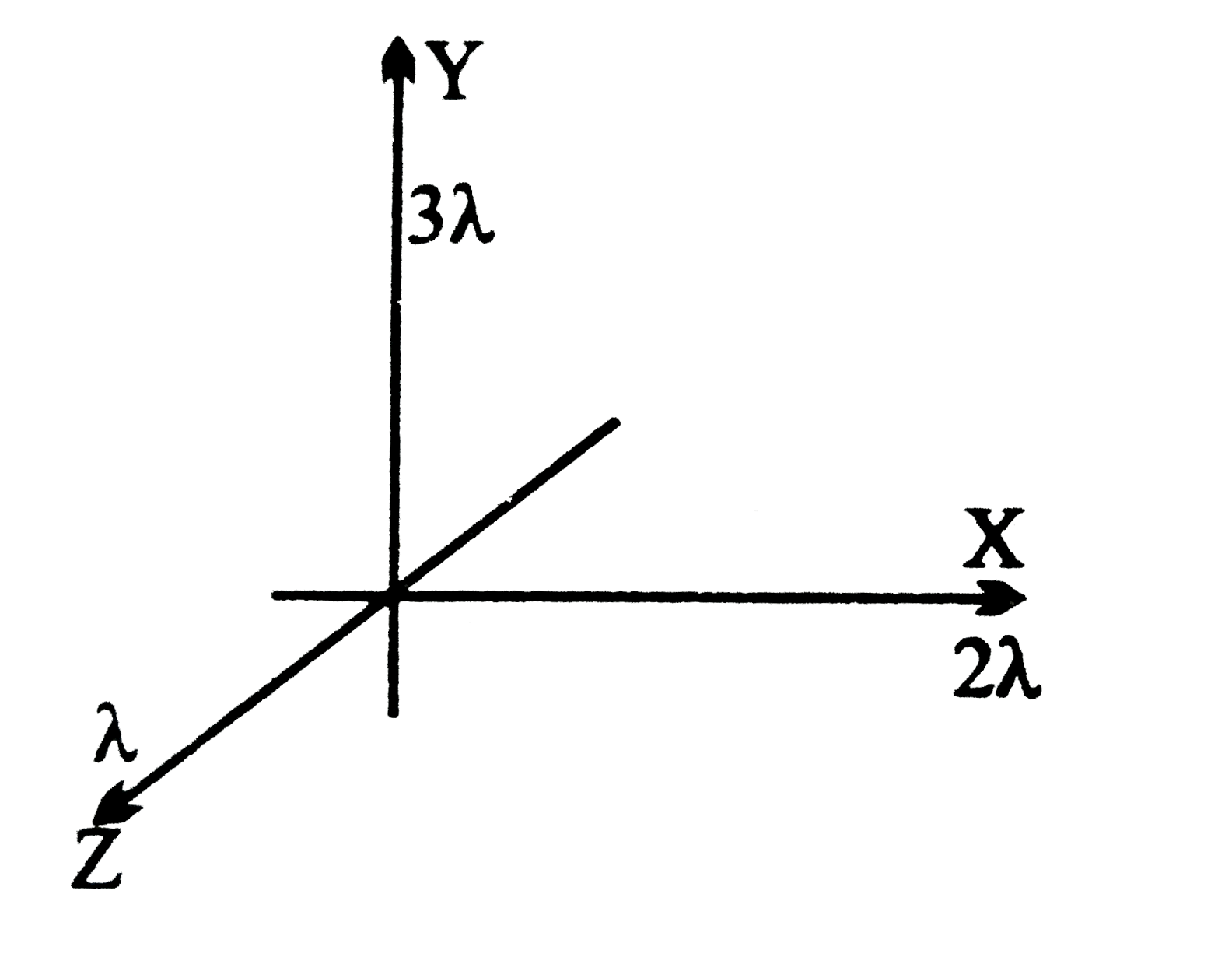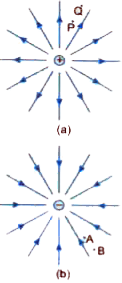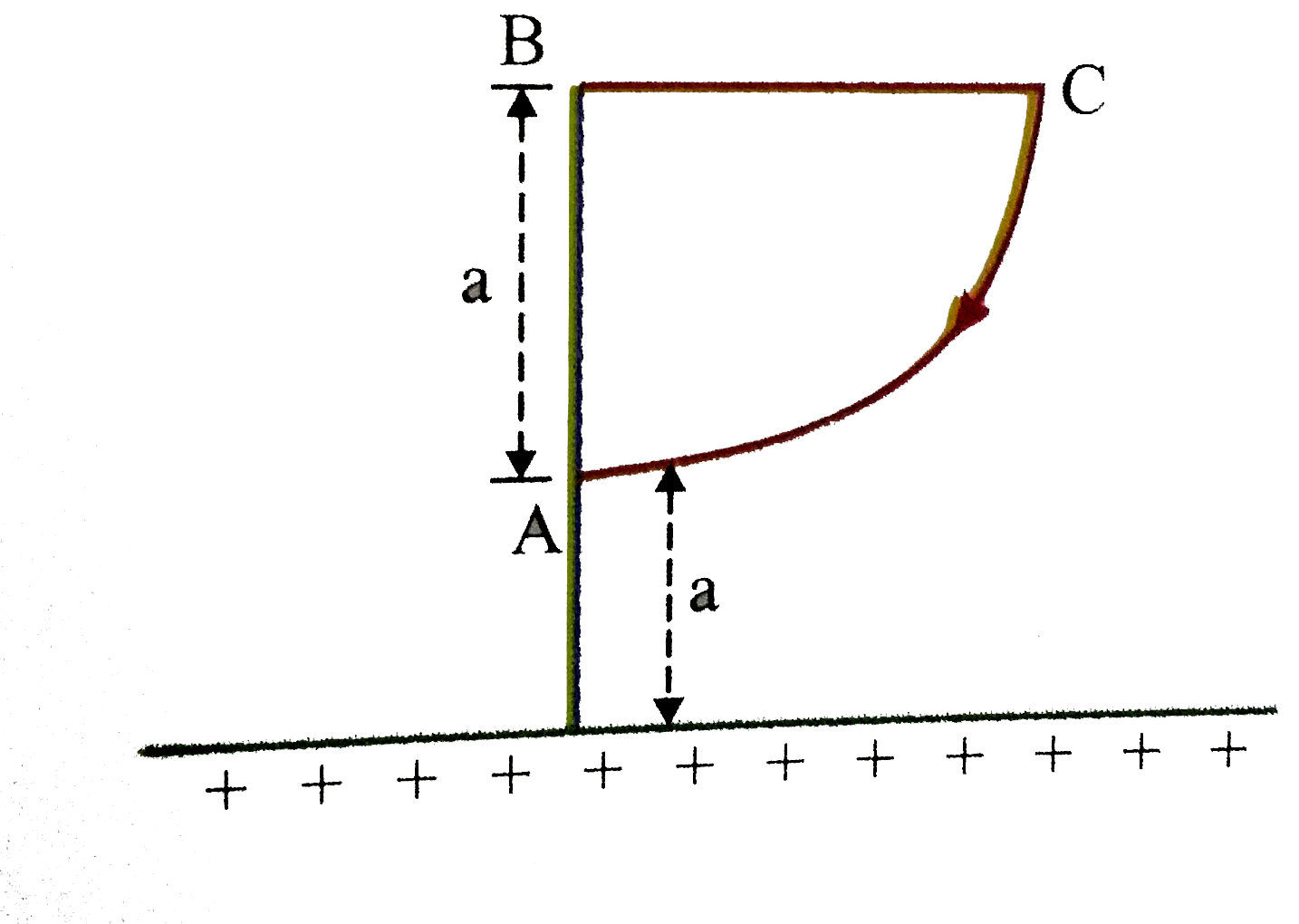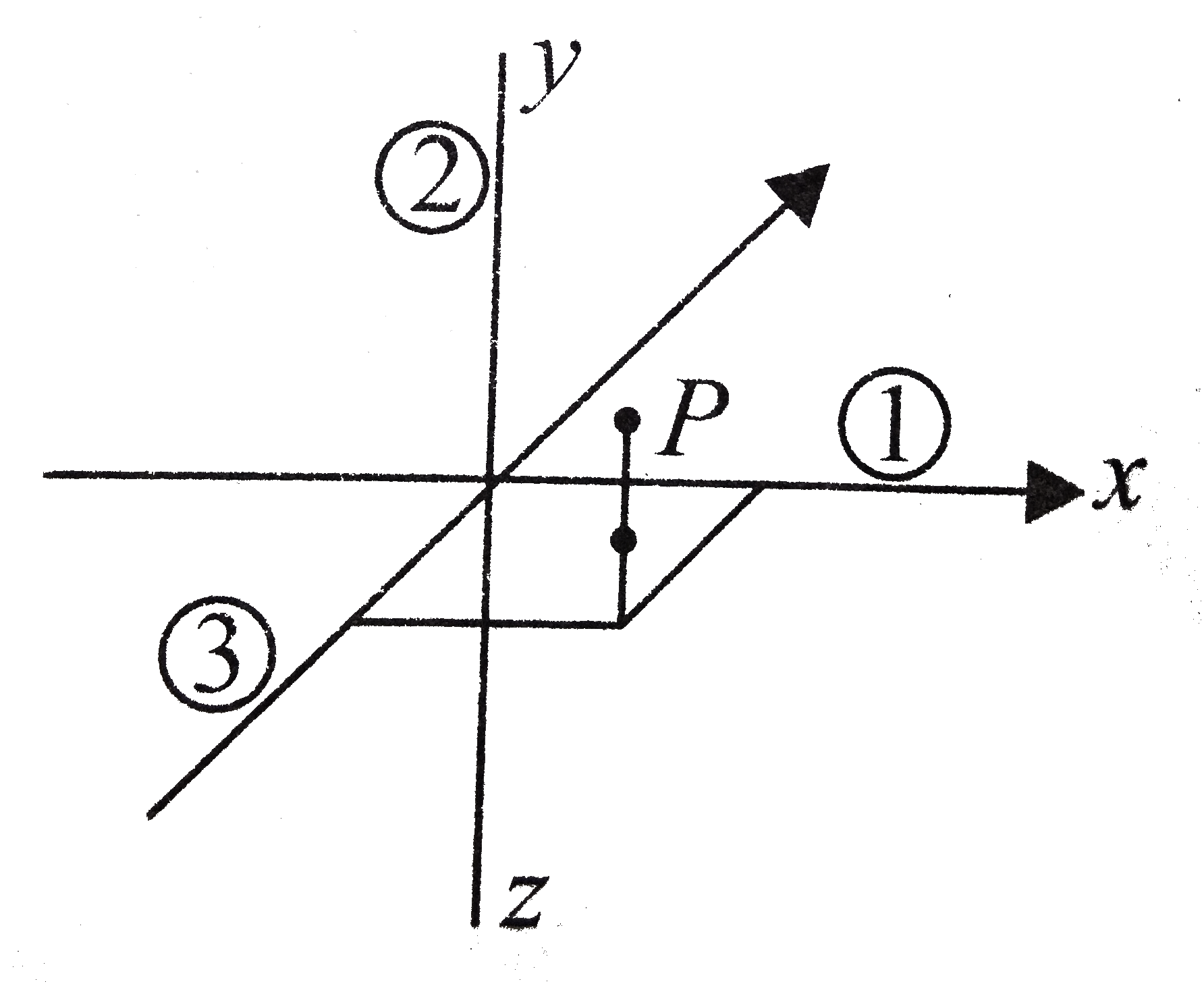The diagram shows three infinitely long uniform line charges placed on the X,Y and Z axis . The work done in moving a unit positive charge from (1,1,1) to (2 , 1,1,) is equal to
 .
.
The correct Answer is:B
As E=λ2π∈0r
so V=λ2π∈0lnr⇒W=λ2π∈0ln∣∣∣r2r1∣∣∣
W=λ2π∈0ln(√2√1)+2λ2π∈0ln(√2√2)
=λ2π∈0ln2
Topper's Solved these Questions
- BOOK - ALLENCHAPTER - MISCELLANEOUSEXERCISE - Exercise-031videos
MISCELLANEOUS
- BOOK - ALLENCHAPTER - MISCELLANEOUSEXERCISE - Exercise-041videos
MISCELLANEOUS
- BOOK - ALLENCHAPTER - MISCELLANEOUSEXERCISE - Exersice -05(B)20videos
MISCELLANEOUS
- BOOK - ALLENCHAPTER - KINEMATICS (MOTION ALONG A STRAIGHT LINE AND MOTION IN A PLANE)EXERCISE - BEGINNER S BOX-78videos
KINEMATICS (MOTION ALONG A STRAIGHT LINE AND MOTION IN A PLANE)
- BOOK - ALLENCHAPTER - PHYSICAL WORLD, UNITS AND DIMENSIONS & ERRORS IN MEASUREMENT EXERCISE - EXERCISE-IV8videos
PHYSICAL WORLD, UNITS AND DIMENSIONS & ERRORS IN MEASUREMENT
Similar Questions
Fig (a) and (b) show the field lines of a single positive and negative charges respectively .
Give the sign of the work done by the field in moving a small positive charge from Q to P .
 View Solution
View SolutionIn a gravitational field →−−→rg=(2ˆi+3ˆj)N/kg. What is the work done in moving particle from (1,1) to (2,1/3) along the line 2x+3y=5.
View Solution
Knowledge Check
- Question 1 - Select One
The diagram shows three infinitely long uniform line charges placed on the X,Y and Z axis . The word done in moving a unit positive charge from (1,1,1) to (0 , 1,1,) is equal to
 .Aλln22πɛ0B(λln2)/πɛ0C(3λlln2)/2πɛ0DNone
.Aλln22πɛ0B(λln2)/πɛ0C(3λlln2)/2πɛ0DNone - Question 2 - Select One
What is the work done in moving a unit positive charge from infinity to that point in electric field called?
AElectric potentialBPotential differenceCElectric currentDElectric circuits - Question 3 - Select One
An infinite line of charge λ per unit length is placed along the y-axis. The work done in moving a charge q from A(a,0) to B(2a,0) is
Aqλ2πε0"ln" 2Bqλ2πε0ln(12)Cqλ4πε0)ln√2Dqλ4πε0ln2
A sphere is constructed around a positive point charge q. The work done in moving a unit positive charge on this sphere is numerically equal to
View SolutionThere is 10 units of charge at the centre of a circle of radius 10m. The work done in moving 1 unit of charge around the circle once is
View SolutionWhen 1 J of work is done in moving a charge of 1 C from one point A
View SolutionFor an infinite line of charge having linear charge density λ lying along x-axis the work done in moving a charge q form C to A along CA is
 View Solution
View SolutionFind the electric field vector at P (a,a,a) due to three infinitely long lines of charges along the x-, y- and z-axis, respectively. The charge density i.e. charge per unit length of each wire is (lamba),
 View Solution
View Solution
